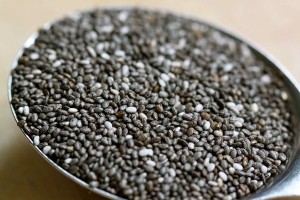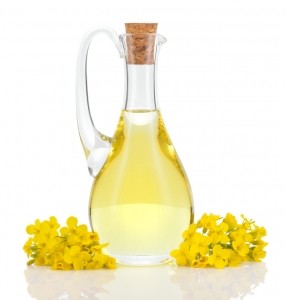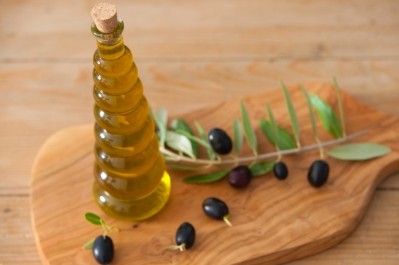Old-time favourites or one-time fads: Which specialty oils are trending in Europe?

With over half of German consumers agreeing that the type of oil used makes a difference to the dish when cooking, specialty oils and fats are gaining traction both as a consumer product and as an added value ingredient.
Mintel analyst Julia Buech says: "Beyond olive, sunflower and rapeseed oil, consumers are hence increasingly reaching out for more specialty varieties. One in five (18%) German adults bought nut-based oils such coconut, walnut or peanut oil in 2014, for example. The purchase level is highest among key European markets."
Olive oil
Olive oil’s health and wellness claims are backed by science – PREDIMED was an interventionalist study involving more than 7000 Spanish participants. Those who followed a diet high in olive oil – 5 soupspoons per day – were 30% less likely to suffer a cardiovascular event.
According to Euromonitor, olive oil’s solid reputation is further boosted by the fact that it is one of the least processed commercially available oils.
“This is particularly true for extra virgin cold-pressed olive oil, which sells at a premium - also plays an important role in its worldwide success, especially nowadays, when consumers are ever more strongly inclined towards seeking out "natural" offerings and rejecting all that they consider to be ‘chemical’ or ‘artificial’,” says a 2015 Euromonitor report.
Chia seed oil
Chia oil, or salvia hispanica, is the latest contender for superfood status thanks to its high alphalinolenic (ALA) content, a type of omega-3 fatty acis, which makes up 64^ of the seed oil.
Last year Benexia chia oil got the oil clear from the Commission as a novel food and can be used in foods, drinks and supplements. Obtained through the cold pressing of the seed, it is free from contaminants, claims the company.
Euromonitor analyst Simone Baroke says: “Food and beverage products integrating chia seeds have started to proliferate, particularly in health food shops, and numerous positioning platforms are possible, including digestive and cardiovascular health, cognitive performance, beauty and, of course, the all-embracing general wellbeing.
“Its high ALA content makes it unsuitable for cooking, but, once the tight supply situation eases and prices start to fall, chia seed oil could well emerge as a winner in healthy dips, salad oils and salad dressings.”
Rapeseed oil
Also known as canola, rapeseed oil accounts for 83% of retail value sales for vegetable and seed oils in 2014 and more than half in Scandinavian countries.
And although the main reason for its popularity has been down to its wide availability and fairly low price, there is increasing interest in its health profile.
Researchers from Queen Margaret University found that the omega-6 to omega-3 ratio in rapeseed oil could be beneficial in reducing the risk of heart disease.
That rapeseed is a fairly ubiquitous player is not necessarily a black mark against it in terms of its positioning. Baroke says: “It doesn't always have to be a fancy new arrival drawn from an exotic location. On the contrary: consumers are more receptive to everything that is "heritage" and locally produced than ever before.”
Coconut oil
Still appearing in Amazon’s best seller list across various European sites,
Its popularity is high in Northern European countries with the Netherlands accounting for 21% of coconut oil product launches in 2014, followed by 17% in Finland and 15% in Germany.
Despite a high saturated fat content, coconut oil is high lauric acid, which is believed to help raise levels of ‘good’ high density lipoproteins, which is why oil and margarine manufacturers tend to highlight as low or reduced cholesterol claims on their products - although in Europe coconut oil seems to be limited to an ‘alternative’ consumer products.
Earlier this year Mintel analyst David Turner identified this as a potential gap in its positioning in Europe. “Coconut spreads in Europe may be lacking the backing of big brands, unlike in the US, where popular food brands Earth Balance and Olivio have been using coconut as an ingredient in margarine and butter.
“[We are] yet to see any significant brands launching a coconut spread in Europe. Yet it could be a potential development area as margarine sales are struggling in many European markets,” he said.
Buech agrees: "Brands can position coconut butter as an interesting, equally natural alternative to traditional dairy butters [but] coconut spreads are a more viable route into the mainstream market."
Algae oil
US biotech company Solazyme has developed a high stability oil form microalgae for use in food manufacturing. With a neutral taste and pale colour, the oil can be used in bakery, frying, spray coatings, margarines and sauces and maintains product shelf life.
Solazyme is also marketing algae oil as a cooking oil for consumers. With 87% monounsaturated fatty acids, Thrive Oil also has a neutral taste profile that allows the flavours of other ingredients to take centre stage, the company says.
But could a highly industrialised manufacturing process – the oil is not GM but genetic engineering techniques are used to maximise the oil compounds - such as large-scale algae fermenters mean it does not have the natural, unprocessed image that consumers are looking for?
Baroke says all oil manufacturers must be wary of increased consumer scrutiny on production methods. “Consumers are much more savvy than ever where production methods are concerned, and only too ready to share their learnings and discoveries on social media. For health and wellness-positioned oils to stand up to close scrutiny, not only is cold-pressing essential, but solvent extraction is a definite no-no, and neither must there be even a faint whiff of GMO involvement.”
Insect oil
It’s probably not likely to appear on the shelves just yet… but as demand for alternative and sustainable sources of protein rises, scientists have been investigating the potential uses of insect oil.
While it does not contain as much omega-3 as fish, insect oil does have the essential fatty acids oleic acid, linoleic acid and linolenic acid. Unsaturated fatty acids range from 64 g/100 g in beetles (A. diaperinus ) and crickets (A. domesticus) to 75 g /100 g in mealworms (T. molitor).
Overcoming ‘the yuk factor’ may be difficult, but termite fat is already used for frying in east and west Africa, and grasshopper and soldier fly oil is said to have a pleasant fruit aroma.
Cockroach oil on the other hand smells like vomit – uses would be limited to industrial lubricants or paint.































